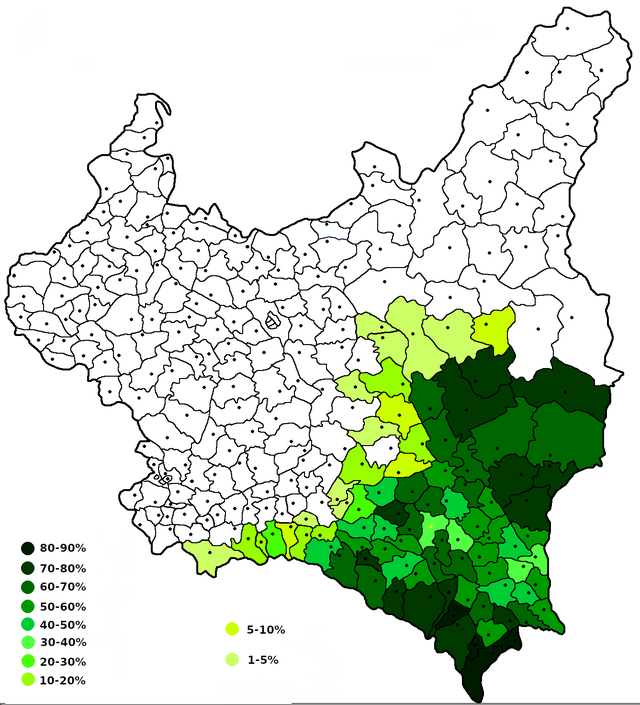Top Qs
Timeline
Chat
Perspective
Ukrainian dialects
From Wikipedia, the free encyclopedia
Remove ads
In the Ukrainian language there are three major dialectal groups according to territory: the southwestern group (Ukrainian: південно-західне наріччя, romanized: pivdenno-zakhidne narichchia), the southeastern group (Ukrainian: південно-східне наріччя, romanized: pivdenno-skhidne narichchia) and the northern group (Ukrainian: північне наріччя, romanized: pivnichne narichchia) of dialects.

Northern group
Southeastern group
Southwestern group


Remove ads
List of dialects
Summarize
Perspective
Southwestern group
Southeastern group
Northern group
Remove ads
Emigre dialects
Ukrainian is also spoken by a large émigré population, particularly in Canada (Canadian Ukrainian), The United States, Brazil, Argentina, and Australia. The founders of this population primarily emigrated from Galicia, which used to be part of Austro-Hungary before World War I, and belonged to Poland between the World Wars. The language spoken by most of them is based on the Galician dialect of Ukrainian from the first half of the twentieth century. Compared with modern Ukrainian, the vocabulary of Ukrainians outside Ukraine reflects less influence of Russian, yet may contain Polish or German loanwords. It often contains many loanwords from the local language as well (e.g. снікерси, snikersy, for "sneakers" in the United States[14]).
Remove ads
Disputed status of some dialects
Summarize
Perspective


Balachka
Balachka is spoken in the Kuban region of Russia, by the Kuban Cossacks. The Kuban Cossacks being descendants of the Zaporozhian Cossacks are beginning to consider themselves as a separate ethnic identity. Their dialect is based on Middle Dnieprian with the Ukrainian grammar. It includes dialectal words of central Ukrainian with frequent inclusion of Russian vocabulary, in particular for modern concepts and items. It varies somewhat from one area to another.[16]
Rusyn
The Rusyn language is classified as a dialect of Ukrainian by the Ukrainian government.[citation needed] However Rusyn is considered by some linguists to be a separate language.
- Dolinian Rusyn or Subcarpathian Rusyn is spoken in the Zakarpattia Oblast.
- Pannonian or Bačka Rusyn is spoken in northwestern Serbia and eastern Croatia. Rusin language of the Bačka dialect has been recognised as one of the official languages of the Serbian Autonomous Province of Vojvodina).
- Priashiv Rusyn is the Ukrainian dialect spoken in the Prešov (Ukrainian: Пряшів, romanized: Priashiv) region of Slovakia, as well as by some émigré communities, primarily in the United States of America.
See also
References
Sources
External links
Wikiwand - on
Seamless Wikipedia browsing. On steroids.
Remove ads
